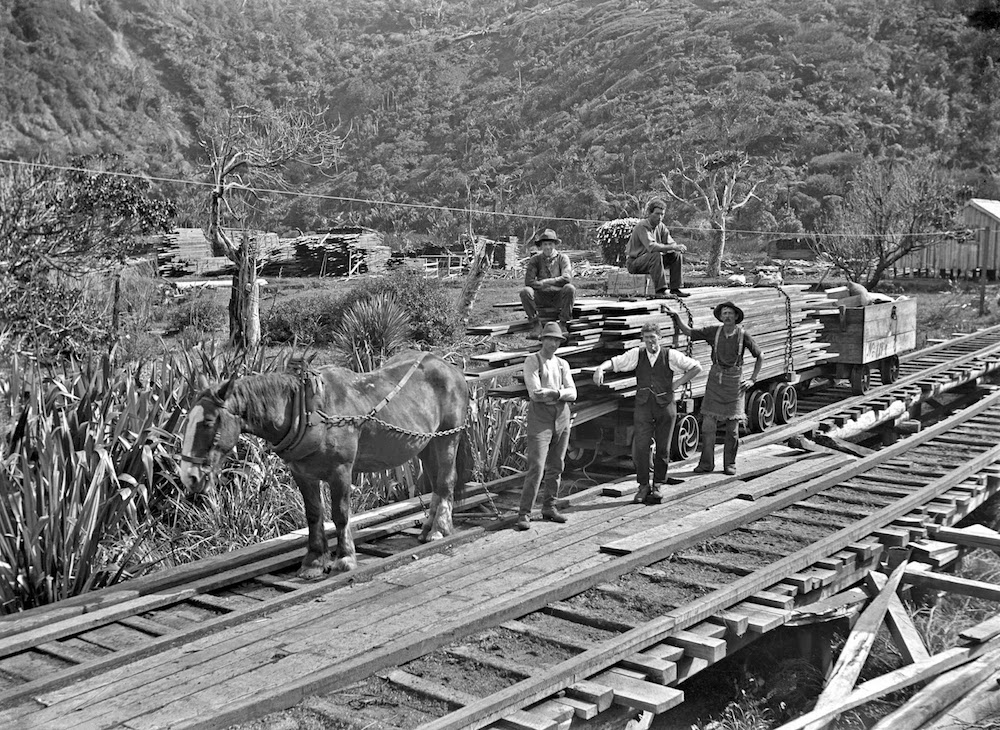The Ghost Town
Tāngarākau township peaked in 1929, during the final phase of work on the Stratford–Taumarunui railway. The road bridge over the Tāngarākau River had been completed, while the rail bridge was still being constructed. In the distance – on the far side of the sports ground – was the school, and around the field was the ‘married-with-children’ housing. The single men’s quarters were next to the road bridge, and the ‘married-without-children’ accommodation were on the near side of the river.
The Railway
Frontier Life
Frontier life in New Zealand was a harsh landscape. Dirt roads, shanty towns and hard manual labour created a society that was founded on hard work, where people worked hard and played hard. Could you imagine working 12 hours per day cutting trees down with a saw, or hammering in new railway tracks with a sledgehammer?

Where Did They Go?
Tangarakau was a thriving town, built for the need to accommodate the workers and equipment needed for the construction of the railway. However, when the railway was commissioned and there was no longer need for workers in the area, the Tangarakau township became a ghost town, almost overnight.
